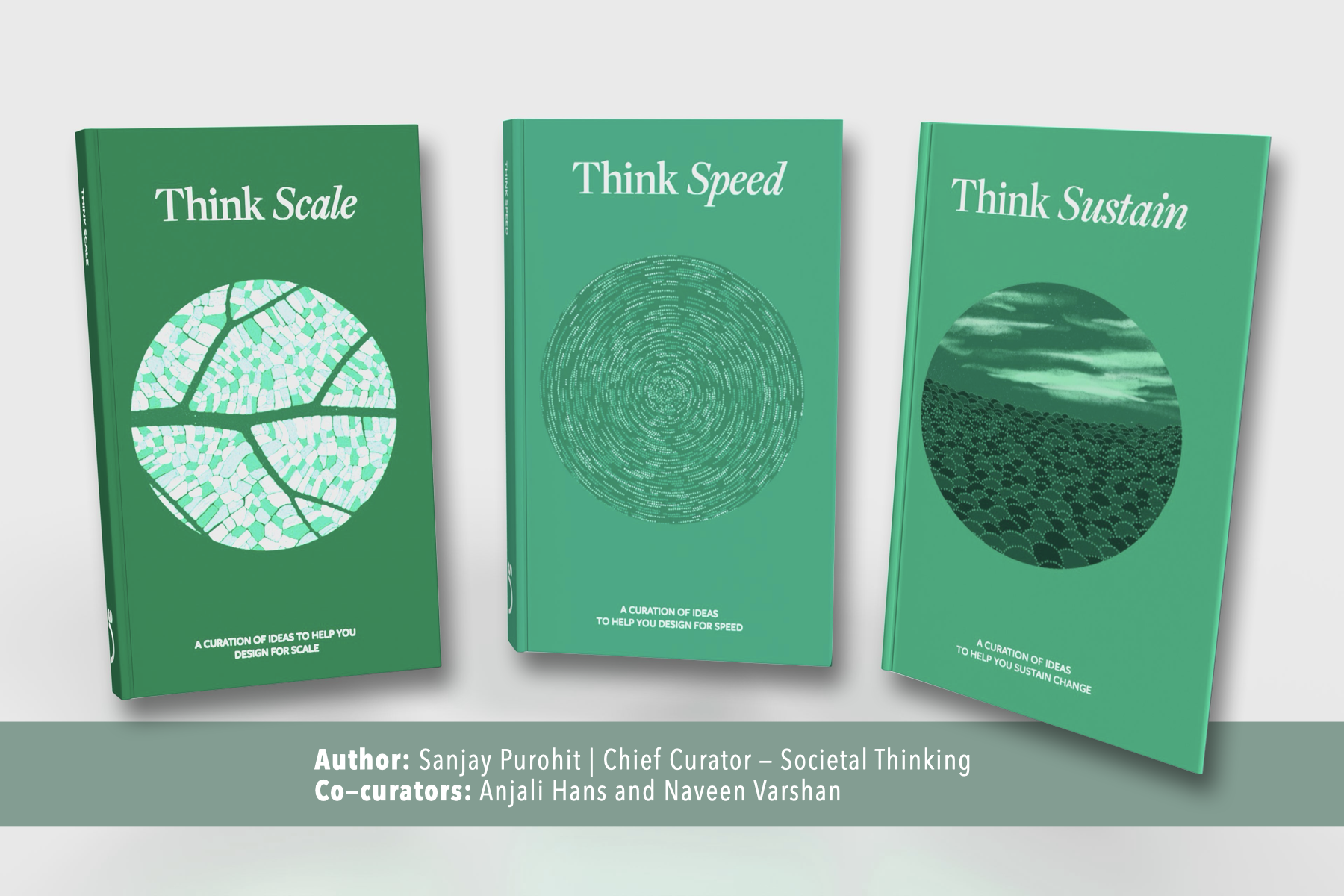Aruna and I are in an Innova on the road from Patna to Nalanda, lurching across fields freshly tilled for paddy and maize. It is a world very different from Bangalore – a world we have come all the way to explore and learn more about. In Bangalore, we spend our time trying to answer the question ‘What would it take to enable irreversible economic mobility for everyone?’ It is a big question, stuck in a web of intersecting, overlapping threads of socio-economic location, caste, gender, religion, disability status – every aspect of identity that shapes our everyday lived experience. In Nalanda, we will meet women in Majidpur, Rahui, who are part of JEEViKA’s Satat Jeevikoparjan Yojana (SJY) programme.

The SJY programme was launched by the Government of Bihar in 2018 to irreversibly alleviate 100,000 households out of multi-dimensional ultra-poverty. Designed in keeping with the globally recognised Graduation Approach, SJY follows a holistic approach towards enabling livelihoods for the ultra-poor, with a special focus on caste and gender. This includes asset-grant transfer, training, temporary allowance, weekly mentoring, life skills coaching, access to savings accounts and health information and/or services.
On our way, we stop for chai and mushroom pakoras (our server tells us Bihar is the leading producer of mushrooms in India). It is hot and humid but chai is still welcome. Even more welcome is a conversation over chai with our companions for the visit – Radhika and Shubhangi from ACCESS Development Services. They recount Andhra Pradesh’s success with the Society for Eradication of Rural Poverty (SERP) set up by the Government of Andhra Pradesh – a model programme centred around community-based organisations to achieve sustainable per capita household income of INR 100,000 a year from multiple sources and improved Human Development Indicators. This unique structure, they tell us, serves as a blueprint for Ajeevika (National Rural Livelihoods Mission) in India.
SJY too brings members of the community to the fore as frontline implementers. The model is organised around Self-Help Groups (SHGs), Village Organisations (VOs) and Cluster Level Federations (CLFs) – with members of and for the community. Moreover, from the community, a cadre of Master Resource Persons (MRPs) is selected and trained to hand-hold 30-35 ultra-poor households in graduating out of poverty. While MRPs make sure households become economically resilient and are able to access pre-existing financial inclusion infrastructure, SHGs promote savings, easy loans and open a space of agency, dignity and choice for women. Going a step further, VOs offer women the opportunity to have a voice on socio-economic issues in the community. SJY activates a cycle of change that continues beyond the programme’s 24-month period. We were in Nalanda to see SJY in action and, in preparation for the visit, I’d looked at SJY’s impact numbers. Till date, it has reached 13 million rural women, 0.16 ultra-poor households and organised 1.04 SHGs. I could not, in any way, have prepared for the powerful stories of change I was told by more than 40 Didis in Majidpur.
We steer off the road onto a nearby path. Tiny goats glance at us and go back to pecking the grass as we walk into Majidpur. I am jittery – this is my first ever community visit, and I am frantically wondering what to say, what to ask and how to ask what I want to ask. I am simultaneously mortified at my privilege and humbled because of it. I am pulled out of my head when I see the Didis from Manokamna CLF, all dressed in bright green sarees, smile and welcome us inside a big room.
“Whenever I used to step out of my house before I became a part of Manokamna CLF, people used to ask me why I was going out and where I was going. I would venture out as little as I possibly could and when I did, people greeted me as ‘his mother’ or ‘his wife’. Now, as soon as I step out, I meet another Didi. We are happy to see each other and call each other by our own names. I have my own identity. I belong here,” a Didi tells us. This sense of community is palpable between all the Didis. They introduce themselves, first and foremost, as part of the Manokamna CLF. Even before SJY, the Didis recollect, they would chip in to help one another out with food and basic necessities. It was hard on some days, yes, but as a community, help was always a collective effort. Community, for them, is as much belongingness as a value – they are bound together and make decisions for the benefit of all. Even sensitive conversations around why some households are given grants while others have to repay loans are discussed with empathy. “We often acknowledge that we all don’t have much but they [the household given a grant] have even less. I remember a woman whose house didn’t even have a roof. She is a widow and has a young child. We brought up her as an example.”

Eventually, we join an SHG meeting. The Didis start with a hymn and we all bow our heads. The MRP asks each Didi for an update on their shops, goats (or other livestock) and savings. She tells us the many pathways they try to figure out what business may work out – from kirana shops, and tailoring to selling eggs or other snacks. One Didi traces her journey from not having even INR 2 to spare to now, sending her kids to a private school where the fee is INR 500. Another tells us about her kids who are studying in college. They tell us how at first they weren’t permitted to enter banks and now, the banks themselves prioritise their work.

It is a sea change – tangible in Majidpur’s electricity and water supply and for me, most deeply felt in the courage and camaraderie of the Didis. SJY restores the agency of communities to see, sense and solve the problems they face. It expands what ‘community’ can mean – as Wendell Berry says, “A proper community, we should remember also, is a commonwealth: a place, a resource, an economy. It answers the needs, practical as well as social and spiritual, of its members – among them the need to need one another.”
Read more about unlocking resilient livelihoods.
 Back
Back


